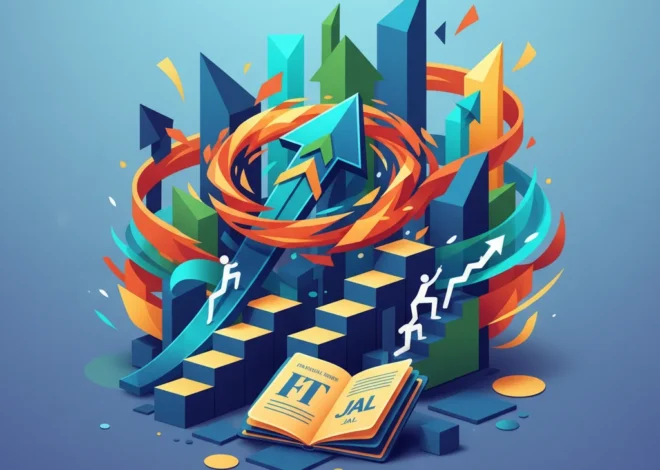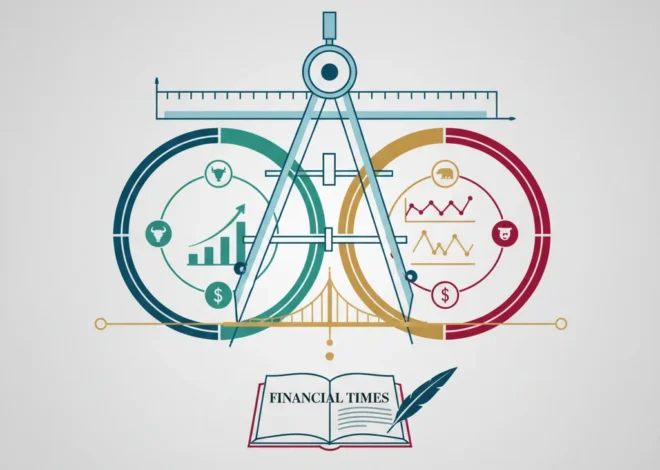
Beyond the Headlines: The Economic Shockwaves of the Gaza Truce Strain
In the intricate dance of global affairs, the slightest misstep can send tremors across the world. The recent news of Israel imposing aid restrictions in Gaza, as a fragile truce with Hamas comes under severe strain, is a stark reminder of this reality. While the headlines rightly focus on the immediate humanitarian crisis and the delicate diplomatic negotiations, for investors, business leaders, and financial professionals, there’s a parallel narrative unfolding—one written in the language of market volatility, economic risk, and supply chain fragility.
The situation, as reported by the Financial Times, details a complex standoff where humanitarian supplies are becoming a bargaining chip in response to Hamas’s alleged delays in returning the bodies of dead hostages. This development is not merely a regional political issue; it is a catalyst for economic uncertainty that has far-reaching implications for the global economy. Understanding these ripple effects is no longer optional for anyone engaged in international finance—it’s essential for navigating the turbulent waters of today’s interconnected markets.
The Immediate Market Reaction: Pricing in Uncertainty
The first and most visible impact of escalating regional tensions is always felt in the financial markets. Instability breeds fear, and fear prompts a flight to safety. For Israel, the economic costs have been direct and significant. The Tel Aviv Stock Exchange (TA-35 index) has experienced notable volatility since the conflict’s inception, and the shekel has faced pressure against the US dollar, prompting intervention from the Bank of Israel to stabilize the currency (source). These are the immediate, localized tremors.
However, the shockwaves radiate outward. Global investors re-evaluate their exposure to the region, and a “geopolitical risk premium” gets priced into key assets. The most sensitive of these is crude oil. The Middle East accounts for nearly a third of global oil supply, and any threat of a wider conflict involving major producers like Iran sends jitters through the energy markets. While prices have fluctuated, the underlying threat keeps a floor under the price, impacting inflation forecasts and corporate energy costs worldwide. This directly influences the stock market, as higher energy prices can squeeze profit margins for industries from aviation to manufacturing.
Supply Chain Fractures and Global Trade Disruptions
Beyond the immediate market sentiment, geopolitical instability in the Middle East strikes at the heart of the global logistics network. The conflict has already led to significant disruptions in the Red Sea, a critical artery for global trade connecting Asia and Europe via the Suez Canal. Attacks on commercial vessels by Houthi rebels in Yemen, acting in solidarity with Hamas, have forced major shipping companies to reroute vessels around the southern tip of Africa.
This rerouting isn’t a minor inconvenience. It adds thousands of miles, up to two weeks of transit time, and millions of dollars in fuel costs to each voyage. The result is a cascading effect across the global economy: delivery delays for consumer goods, increased shipping insurance premiums, and higher freight costs that are ultimately passed on to consumers, stoking inflationary pressures. For businesses, this disruption necessitates a complete re-evaluation of supply chain resilience, inventory management, and the hidden costs of geopolitical risk—a critical consideration for any leader in today’s volatile environment.
A New Frontier: Can Financial Technology Offer a Solution?
The very issue that triggered the latest tensions—the delivery of humanitarian aid—also highlights a critical weakness in our global systems. Traditional aid distribution is often slow, opaque, and vulnerable to political interference and logistical bottlenecks, as the situation in Gaza demonstrates. This is where a surprising sector offers potential solutions: financial technology, or fintech.
The challenges of delivering aid in a conflict zone are immense. Cash can be diverted, physical goods can be blocked at borders, and traditional banking infrastructure may be non-existent or destroyed. Herein lies the opportunity for innovation through fintech and blockchain technology. Imagine a system where international aid organizations can transfer funds directly to the digital wallets of verified recipients, bypassing intermediaries. Consider a blockchain-based ledger that tracks every dollar from the donor to the point of purchase for food or medicine, providing unprecedented transparency and accountability.
This is not a far-fetched concept. Such technologies are already being trialed in various contexts globally. Their application in humanitarian crises could be transformative. The table below illustrates the potential shift.
A Comparison of Aid Delivery Models:
| Metric | Traditional Aid Delivery | Fintech/Blockchain-Enabled Aid |
|---|---|---|
| Speed | Days to weeks, subject to physical transport and banking hours. | Near-instantaneous digital transfers, 24/7. |
| Transparency | Low. Difficult to track funds through multiple intermediaries. | High. Immutable ledger provides a full audit trail of transactions. |
| Cost | High overhead and administrative fees (often 5-15% (source)). | Significantly lower transaction fees, maximizing aid delivery. |
| Accessibility | Reliant on physical access and functioning banks. | Accessible via basic mobile phones, bypassing physical blockades. |
| Security | Vulnerable to theft, corruption, and political seizure. | Cryptographically secure, reducing risk of fraud and diversion. |
While not a panacea, leveraging financial technology represents a paradigm shift in addressing humanitarian challenges, turning a complex problem into a potential showcase for innovation in finance.
The Investor’s Playbook for Geopolitical Volatility
So, what are the actionable takeaways for the modern investor or business leader? The era of ignoring geopolitics is over. Integrating this analysis into your financial strategy is paramount.
- Diversify Beyond Asset Classes: Geographic diversification is just as critical. Over-concentration in any single region, especially one prone to instability, is a significant unhedged risk.
- Understand Commodity Correlations: In times of Middle East tension, assets like gold often rise as a safe haven, while oil prices become a key indicator to watch. Understanding these correlations is crucial for effective hedging and trading strategies.
- Invest in Resilience: The crisis highlights vulnerabilities. This creates long-term investment opportunities in sectors building resilience. Think cybersecurity firms protecting critical infrastructure, logistics companies developing more robust supply chains, and even the fintech innovators creating next-generation payment and aid delivery systems.
- Maintain a Long-Term Perspective: Geopolitical shocks often cause sharp, short-term market reactions driven by emotion. A disciplined, long-term approach, grounded in sound fundamental analysis of the underlying economics, remains the most prudent path.
Conclusion: The Interconnected Reality of a Modern Economy
The strain on the Gaza truce and the subsequent curbs on humanitarian aid are a profound human tragedy. Yet, as we have explored, the event’s ripples extend far into the complex machinery of the global economy and finance. It serves as a powerful, real-world lesson on the interconnectedness of our world, where a localized conflict can influence everything from the price of gasoline to the strategic decisions made in corporate boardrooms and on trading floors thousands of miles away.
For those of us in the world of finance and business, the key is not to predict every political event but to build robust, resilient strategies that can withstand the inevitable shocks. By understanding the intricate links between geopolitics, markets, and technology, we can better navigate the uncertainty and identify the opportunities that emerge even in the most challenging of times.


